Comparisons 21 min read
Premium electric cars from Polestar and Tesla go head-to-head
Is the Polestar 2 with the Performance Pack a match for Tesla’s fastest Model 3? We compare both models to see which comes out on top.
Jump to:
Overview What are they like to drive? Buying, running costs and range Style stakes Space, comfort and practicality Infotainment Which has the most equipment? VerdictOverview
While consumers and media alike may think of the Polestar 2 as a direct competitor to the Tesla Model 3, CEO of Polestar Thomas Ingenlath has different ideas. He has made it very clear in various interviews that it is going after its German rivals rather than the American electric car maker, telling one publication that “Polestar is definitely not in the same game as Tesla, reaching much more to the mass market”.
The fact that the two cars in question are similar in price, footprint and concept however, it’s a given that if one had around fifty grand to play with it would be hard not to compare the Polestar 2 with the Tesla Model 3, which is why we decided to pitch the electric saloons against one another to settle the score.
Tesla is arguably a technology company first and a vehicle manufacturer second, but as an electric off-shoot of Volvo Cars, Polestar is also a young car maker. Both have many things to learn – Tesla needs to improve the build quality of its cars, Polestar needs to improve its tech. For now though, let’s see what the two brands are getting right and wrong with their latest offerings in the form of the Tesla Model 3 Performance (£56,490) and Performance Pack equipped Polestar 2 (£51,900).
What are they like to drive?
Both place a motor on each axle for an all-wheel drive total of 483hp (Tesla) and 408hp (Polestar), and if this was a game of Top Trumps, the Tesla would win hands down in the 0-60mph sprint (3.2 vs 4.7 seconds) and top speed categories (162 vs 127mph). Interestingly, if you had picked torque neither player would have taken the card with them both having 487lb-ft.
The Performance model would beat a lot of supercars so it’s not really a fair comparison and you could argue that this sort of power is unnecessary for the road, although it does offer a Chill mode for slower acceleration. Furthermore the Polestar 2 is quicker than the Standard Range Plus variant of the Model 3 by 0.6 of a second, but it’s also a lot more expensive with prices starting at £46,900, compared to the £40,490 Tesla are asking. Although there aren’t any modes, you can choose to comfortably cruise in the Polestar or hammer it – this car still provides an addictive, fast and feisty shove.
In terms of ride, the Tesla is marginally better – in that it’s more comfortable and does a better job of absorbing our less than perfect roads. This might be down to the fact that our Polestar 2 is equipped with the Performance Pack which includes adjustable Öhlins dampers (as well as refined spring and stabiliser bar rates) designed for road and track use and err on the side of firm compared to Tesla’s setup that’s specifically designed to be comfortable.
In fact, Tesla (not surprisingly) drew on learnings from NASA when refining the Model 3’s suspension settings, which included research into how long the body can be subjected to a certain frequency without feeling uncomfortable. Based on the fact that vertical frequency of a suspension’s movement affects comfort and how a car feels to drive, with most cars typically ranging from 1.0 to 3.0 Hertz (people walk with an average frequency of between 1.8 and 2.0Hz), Tesla engineers tuned the model 3 to an undisclosed value that’s the equivalent of a brisk walk or a slow run, to help feel sporty, but ensure occupants are relaxed.
Due to high loads (from the weight of the battery) and continual torque (the inherent nature of an electric motor), high-performance EVs are challenged in ways that internal combustion engine cars are not and to that end, both Tesla and Polestar developed their own tyres. Tesla focused on tread stiffness, developing new compounds to deliver the desired combination of cornering grip and low rolling resistance, whereas Polestar, who also worked with Michelin (for its base 19 inch tyre), concentrated on the latter to help contribute to the driving range, with a relatively tall sidewall, to offer a premium level of ride comfort. The 20 inch tyres specially created through cooperation with Continental and fitted to our test car (as part of the Performance Package) are the same width as the standard 19s but feature a lower 40-series profile and stronger sidewall so there is less deflection, and thus more road feel and grip.
Handling-wise, the steering of the Polestar lets it down. The electric power steering system of the Tesla has a rapid 10:1 ratio, giving two turns lock-to-lock, as opposed to the Polestar’s 15.8. The Tesla responds to steering inputs quicker and more precisely and you don’t need anywhere near the same amount of lock as you do in the Polestar when tackling the twisty stuff. While you can adjust the steering feedback to either Heavy, Standard or Light (in comparison Tesla offers Comfort, Standard and Sport) the steering ratio remains the same and is just not as communicative. In both cars Standard offers the best handling and response in all conditions. With all that said, overall the Polestar 2 feels dynamic, balanced (with its 51/49 front/rear weight distribution, note Tesla Model 3 Performance is 50/50) and predictable, even you’re pushing on, which is impressive considering it’s a Volvo XC40-derived chassis and weighs 276kg more. It’s certainly very well damped as the Polestar isn’t crashy and the body’s chunky mass is very well-controlled.
Tesla has one of the simplest regen braking settings: standard and low. The latter is useful for first-time EV owners but once you get used to it the former is definitely more efficient and it’s one of the smoothest systems we’ve used also allowing for one pedal driving. The Polestar has three modes, Standard presents the highest rate of regeneration which slows the car down a little at first and then increases the braking force – it’s not as seamless as Tesla’s – while the low setting reduces this somewhat but both will bring it to a complete stop. The third mode deactivates the regenerative function completely. The Polestar 2 also provides settings for stability control (ESC Sport or the factory setting), and Creep at stops (Off or On).
In terms of hydraulic brakes both cars (if you opt for the £5000 Performance Package on the Polestar) have Brembo four-piston calipers up front rather than a cheaper, single-piston sliding version for superior pedal response, which are clamped to 355x25mm (front) and 335x20mm (rear) discs on the Tesla and 375x35mm (front) and 340x20mm (rear) on the Polestar.
Buying, running costs and range
With the models that we are testing there is a £4590 price difference on outright purchase or £143 per month on a Personal Contract Hire (over a 48 month term with an annual mileage of 10,000) in the Polestar’s favour (Polestar cost £543, Tesla £686), which is fairly negligible when you’re spending these sort of figures. The Polestar might come in cheaper but it has less range (292 vs 352 miles) and takes more time to charge, and as previously mentioned it’s slower. It does cost less to insure (more on that in a bit) at least but while the warranty on the batteries of both cars is eight years Polestar has capped the mileage at 99,419 miles as opposed to Tesla’s more generous 120,000 miles.
Were one to buy the cheapest version in the Model 3 line-up – the standard Range Plus – and compare it with the base price of the Polestar 2 (£46,900), the Tesla would be £6,410 cheaper but have 25 miles less range and take 0.6 seconds more to reach 60mph. Interestingly, the Long Range is the exact same price as the Polestar 2, but has 68 miles more range and is half a second quicker, and on those points alone, never mind the fact it drives better, we’d take the Tesla.
Ingenlath has said different variants are coming, with the Polestar 2 receiving a single electric motor option from next year to make it more affordable but that also a longer-range version is on the way. He mentioned that the company is learning about Polestar 2 and will be improving its efficiency, through software updates so hopefully it will add some miles for new and already purchased cars.
Running costs for both cars should be fairly similar with money saved on servicing and mechanical repairs given their relative lack of moving parts. Even so it is worth bearing in mind Polestar includes three years' servicing (up to 31,250 miles) in the asking price, along with three years' roadside assistance and three years' free access to connected infotainment services. Intervals aren't specified rather Polestar will contact you when your car needs maintenance which is based on the car's running time and distance covered. Like Tesla, over-the-air updates are free for the lifetime of the car.
That said the vehicle warranty for the Polestar is three years as opposed to Tesla’s four. Polestar sits in group 42 for insurance whereas the Tesla Model 3 occupies groups 48 and 50, depending on specification. On the flipside, and a major consideration to those buying new, according to a study (on iSeeCars), the Tesla Model 3 retains almost 90% of its value over three years, which is significantly better than Polestar’s 60%. That’s an America website of course, according to ‘experts’ Auto Express use, the Model 3 Performance will retain 59.4% of its original price, the 2 has a retained value of 60.7%.
Filling up at the pump and wincing at petrol prices are thing of the past, with just electricity bills to worry about (which won’t be very much if you can charge at home), although on paper the Model 3 returns stronger efficiency of 3.6 miles per kWh, compared to the Polestar’s 3.2 miles per kWh. The urge to put your foot down in the Model 3 Performance however, would probably mitigate that slight difference. For the 2020/21 tax year, electric-car drivers pay zero BiK, rising to just 1% in 2021/22 and 2% in 2022/23. In addition, there's no annual road tax (VED) to pay.
Both cars have more than enough range to cope with day to day driving but also long-distance travel, although this is where the Tesla comes into its own – above all other EVs in fact not just Polestar – with its own supercharger network, which enables fast-charging for making owning an EV convenient and easy. As well as greatly accelerating the deployment of new stations, the capacity of the network is also increasing faster with each station, thanks to the higher charging output of its Supercharger V3, which is reducing the time spent per charging session. And it’s a good job because just in the last year we have noticed that 50 to 75 per cent of the stalls tend to be occupied.
Alongside its Supercharger network though, Tesla is also growing its Destination Charger network for charging at lower speeds at hotels and other destinations like golf clubs (which is all fine and good if they’re not closed due to lockdown).
In Polestar’s defence, it is trying having teamed up with Europe-wide charging outfit Plugsurfing, so owners get access to its 195,000 charging points with one electronic key tag. That aside you’ll be spending a lot more time charging your Polestar, taking 24 vs 23 hours (at 3.7kW, 0-100%) or six hours 24 mins vs four hours 32 mins (at 150kW, 0-80%). That’s down to the Model 3 being able to handle 250kW compared to the Polestar 2’s 150kW – and should you be lucky enough to find either you’ll be waiting only 22 mins for the former (for a 10-80% charge) as opposed to 40 mins for the latter (although that is charging from zero).
Style stakes
When it comes to design, it’s all about personal preference, but it’s fair to say that neither car suffer from being tarnished with the love or hate Marmite styling brush. Both are simple, fresh and clean-cut, loaded with presence but lacking superfluous details – the Polestar even more so being almost entirely devoid of chrome brightwork and it’s so much more attractive in the flesh than in pictures. They are different in proportion of course, the Polestar, which has rather impressively managed to differentiate itself from its Volvo sibling, is tall and chunky in comparison to the curvier, slimmer Tesla, yet they both look distinctive without being extrovert, and luxurious without being ostentatious. I prefer the Polestar, my husband prefers the Tesla. As I say beauty is in the eye of the beholder.
There are five paint choices for the Tesla (with Pearl White being the only free option, and the others costing between £1000 and £2000) and 20 inch wheels are included. In comparison there is one more hue available for the Polestar and Void (read black) is the only free option, with the others costing £900, and you only get 19 inch wheels as standard (20s are a £900 option).
Inside, the centrepiece of both cars is the giant touchscreen (with the Polestar’s measuring 11.5 inches and the Tesla’s 15), but unlike the Tesla, the Polestar also has a 12.3 inch driver display, providing speed, battery status, power or regeneration levels (in Calm mode), as well as if you so wish, safety and assistance functions (in Car/centric mode), or (if in Navigation mode), the addition of a large and clear map view. This is what’s missing from the Tesla Model 3. While the driver can easily see the centre display, it would be great to have key information visible from behind the steering wheel or even shown on a heads-up display. Sort it out Musk!
Another (somewhat huge) feather in the Polestar’s cap is the outstanding fit and finish and the quality of the materials used. When you start to look in detail, the Model 3 suffers from creaks, panel gaps, seal defects and badly fitted components – it’s just not what you expect from a car of this price.
The standard interior in the Polestar is vegan and there are two options – Slate or Charcoal recycled WeaveTech upholstery with Black Ash deco or for an extra £4000 you get ventilated Napper leather with reconstructed wood. Similarly, the standard interior in the Tesla is all black with black and white costing a grand. You’ll spot a few tell-tale shared parts from Volvo (steering wheel controls, some of the switches) which isn’t a bad thing and Polestar has definitely managed to make its own mark. In short, both interiors are modern, slick in their layout and sparsely provisioned, but the Polestar 2’s is more premium looking, gives off a more sophisticated feel then the Tesla’s and is arguably more useable.
Space, comfort and practicality
Both cars have been designed so that they are simple and easy to drive and use. Once you’ve downloaded the amazingly brilliant Tesla app to your phone and added it as a key, it will unlock as you approach it (same with the Polestar with key fob in hand). There’s no traditional start button, the driver only needing to close their door, apply the brake pedal, and select drive or reverse via a typical US-style steering column stalk in the Tesla or a more traditional gear selector in the Polestar.
You sit a little higher in the Polestar than you do in the Tesla, although it’s masked well by the high door stops and enveloping nature of the cabin. We like the way it gives you a more favourable outlook, but there’s no hiding the fact that the rear view is massively obscured by the thick pillars and pillarbox back screen. Fortunately, standard 360-degree cameras and frameless mirrors make parking a little easier. Both seats are supportive and extremely comfortable. Neither car offers much in the way of rear head or legroom for those above six foot, but the Polestar is by far the worse having decided to utilise the original car’s would-be transmission tunnel to house part of the battery pack.
Total luggage space when you take into account the front and rear boot for the Polestar is 440 vs the Model 3’s 425 litres and because the former is a proper hatchback as opposed to a pokey saloon tailgate, the opening is massive. The charging cables also benefit from having their own separate cubby in the frunk (to give it its proper name) although this means you won’t fit a standard carry-on suitcase, whereas the Model 3 will. It seems like an oversight on Polestar’s part as the charge socket is at the back of the car so it’s more than likely owners will keep the cable in the boot, where they’re closer to hand.
There’s decent storage offered by both, including a couple of cup holders, a central cubby under the armrest, and slim door bins with the standard panoramic glass sunroof making the interior feel nice and airy.
Infotainment
Polestar is the first car in the world to feature Google’s Android operating system for its infotainment, and just like Tesla’s setup, the tablet-like touchscreen paves the way for a minimalist cabin. Once you’ve logged in to your Google account, it’s effectively an extension of your phone, with all your regular apps and contacts already saved to the car.
It can be configured to show four apps at once in tile format and it’s instantly familiar to anyone who has used a tablet. It is a significant improvement over Volvo’s offering, mapping is better (and because Google Maps powers the navigation traffic data is really accurate) and it integrates charging point information, while the general UI and layout of the screen is responsive, straightforward and easy to use on the go.
You can't watch Netflix, play video games or hide virtual whoopee cushions under peoples seats though, as you can in a Model 3, and it’s not as slick to look at or use. You can use the 'Hey Google' command and ask it to help you with everything from jokes to sending a message, but it’s not comprehensive. So for example, you can vocally demand to turn on the heated seats, but you can’t raise or lower the heat settings. Still, it’s less frustrating then Tesla’s almost switchless cabin (with just two control column stalks – one to activate windscreen wipers, indicators and high beams, the other to activate Cruise Control/Autopilot as well as Reverse/Neutral/Drive, in addition to scroll buttons on the steering wheel to alter audio/media and Cruise Control/Autopilot settings and electric window switches on the doors) whereby you need to delve into the infotainment to simply open the glovebox or alter your mirrors.
Apps such as Spotify are included, so you can stream music, but only Android Auto is supported, due to it being a Google system. Apple CarPlay will be added in 2021, arriving as an over-the-air update, and Polestar is working on integrating streaming apps, so you can watch film and TV while you wait for your battery to charge. By relying on customer feedback and data on real-world usage, Polestar can work out what to add to the system via download updates, and just like the Tesla improve user experience.
The design and sourcing for Tesla’s audio parts were done by engineers previously employed by Bang & Olufsen, and include a total of 15 speakers: three front tweeters, and front mids, two front subwoofers and immersive speakers, four full-range rear speakers and one subwoofer. As a result the Audio Weaver-powered sound system is quite simply incredible. Polestar’s standard Harman Kardon setup is good, but sadly it’s no comparison.
Which has the most equipment?
The Polestar 2 includes a great level of kit from launch and contains the extremely comprehensive Pilot and Plus packages – you can see a list of the standard features here. Our test car was appointed with the Performance Package which costs £5000 (including Öhlins Dual Flow valve dampers, optimised front brake system featuring Brembo brakes, 20" 4-Y spoke black polished forged alloy wheels, gold valve caps, and seat belts front and rear, and high gloss black roof segment), as well as the £1000 semi-electric tow bar option with a max towing capacity of 1500kg. You can also specify the aforementioned £4000 leather and reconstructed wood to spruce up your interior and the £900 20" 4-V spoke black diamond cut alloy wheels, but that’s it in terms of options.
The Tesla isn’t as well specified (you can see some of the features on the configurator and on the press site) but apart from windscreen wipers that can actually sense the rain and work properly, heads-up display and a hands-free power-operated tailgate, you won’t be wanting for anything. The only option you can select for the Model 3 Performance is Full Self-Driving Capability, which navigates on the included Autopilot but will enable automatic driving on and off the motorway, overtaking of slower cars, automatic lane changes, autopark (both parallel and perpendicular spaces), summon (automatically parking and retrieving your vehicle) and recognising and responding to traffic lights and stop signs. It doesn’t make the car self-driving (still requiring driver attention), and the host of advanced features costs a whopping £6800. While pretty cutting edge and cool, we’ve read reports that it is inconsistent and will often disengage, in time the tech will improve, of course.
Verdict
Whereas Tesla had to build and design its vehicles from scratch, Polestar had the luxury of splitting off from Volvo while having the flexibility, innovation and speed of a small start-up, as well as sharing some of the parent company’s heritage of safety and engineering. In a way though, both are far from a traditional carmaker.
Having looked at both cars in depth – the Tesla Model 3 is the outright winner in every area, bar craftsmanship. However, for those that don’t want to be a part of ‘The Club’, the Polestar is a great EV alternative to Tesla. Tesla have built a reputation for manufacturing a computer on wheels, and to that end we see the Polestar appealing to people who aren’t that bothered about having the latest technology and mostly commute around town. The range (compared to some versions of Model 3 at least) and available charging for the Polestar will limit your ability for dependable stress-free long road trips until the rest of the network catches up with Tesla. The Polestar would also suit owners who have an ICE and are looking for a second car.
We had our hopes set high for Sweden’s 2, and while it’s a remarkably fine car offering respectable range, performance, image and a class-leading infotainment system, and exceptional quality and finish, it doesn’t quite measure up to America’s 3 just yet. Saying that, if you had time with both, you’ll definitely want a Polestar, it’s just a case of whether the Tesla works better for you or not.
1st place: Tesla Model 3 Performance
Discover EV expert verdict…4.5/5
Pros
Acceleration and handling
Liveable range and fast charging network
Technology (including the car itself and the app)
Cons
Build quality not on par with price/rivals
Awkward door handles
Wind and road noise at speed
If you like this make and model of car, you could secure a discount if you use our partner e-car leasing service using the code DEV-ECAR.
2nd place: Polestar 2
Discover EV expert verdict…4.5/5
Pros
Beautiful design and great build quality
Brilliant performance
Decent range
Cons
Steering lacks feel and feedback
No standalone charging network
Expensive car to buy and lease
If you like this make and model of car, you could secure a discount if you use our partner e-car leasing service using the code DEV-ECAR.
Key Specs: Head to head
| Polestar 2 (Performance Pack) | Tesla Model 3 Performance | |
|---|---|---|
| Price (RRP OTR): | From £51,900 | From £56,490 |
| Top speed: | 127mph | 162mph |
| Power: | 408hp | 483hp |
| Torque: | 487lb-ft | 487lb-ft |
| Driving range: | 292 miles | 352 miles |
| Charging time at 3.7kW, 0-100%: | 24 hours | 23 hours |
| Charging time at 11kW, 0-80%: | 6 hours 24 mins | 4 hours 32 mins |
| Max charging capacity: | 40 mins (150kW, 0-80%) | 22 mins (250kW, 10-80%) |
| Insurance group: | 42 | 48-50 |
| Vehicle warranty: | 3 years | 4 years/50,000 miles |
| Battery warranty: | 8 years/99,419miles | 8 years/120,000 miles |

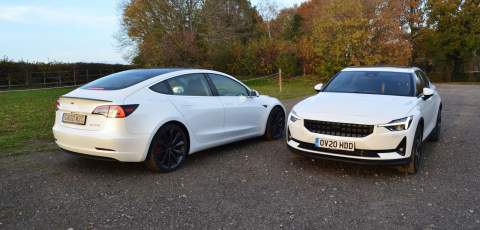
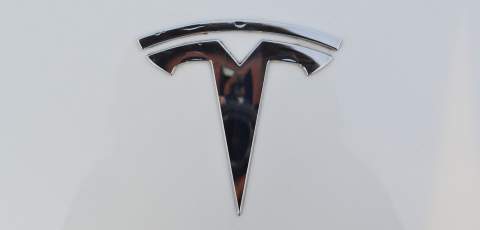
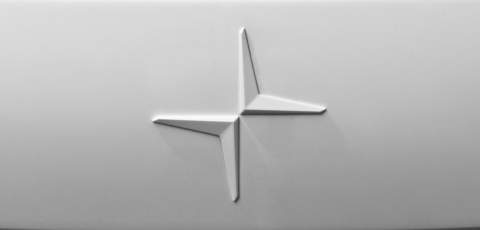
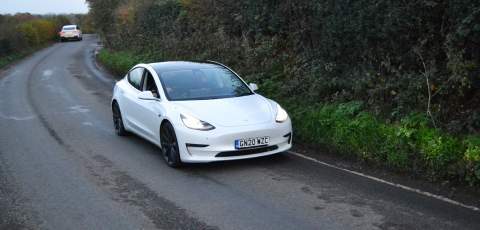
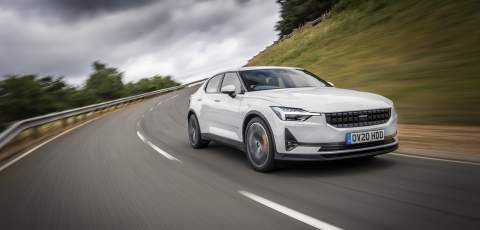
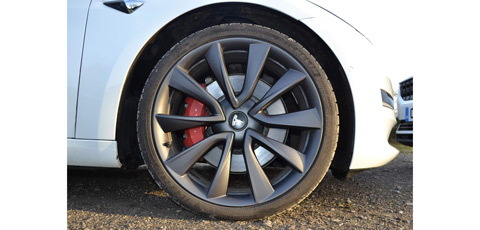
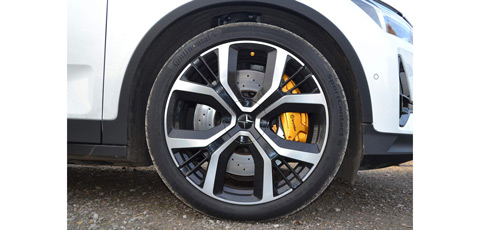
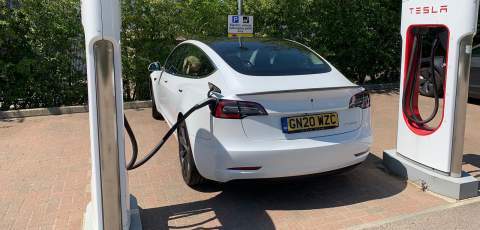
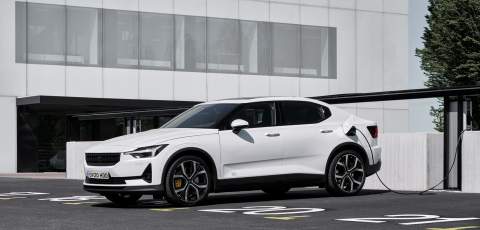
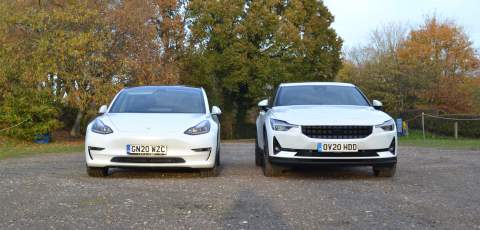
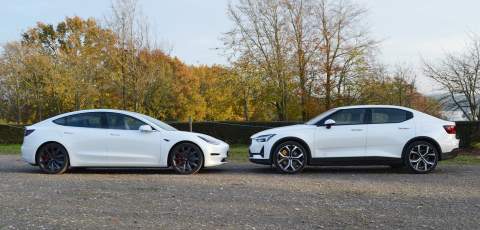
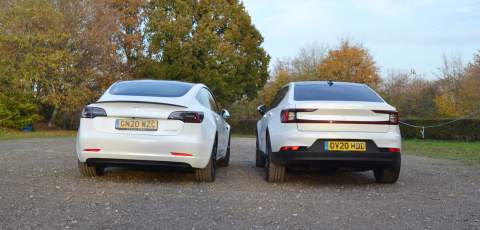
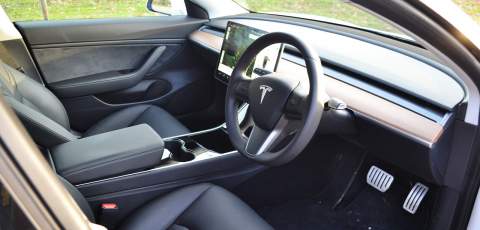
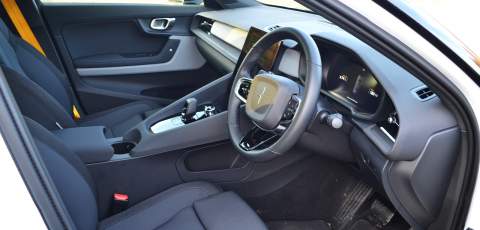
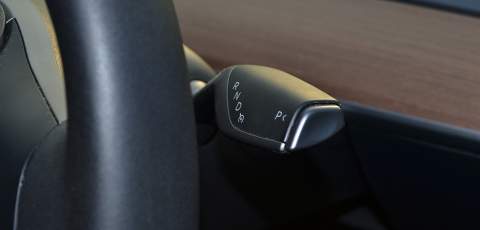
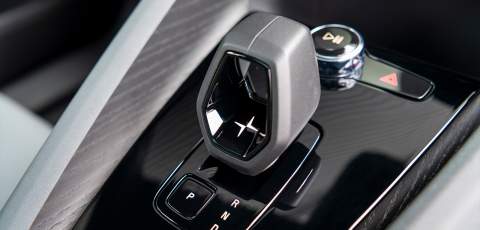
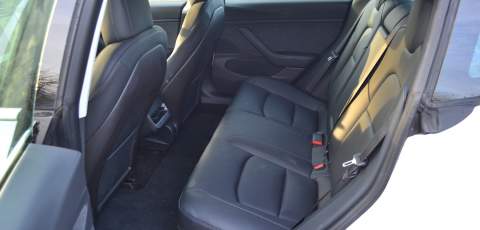
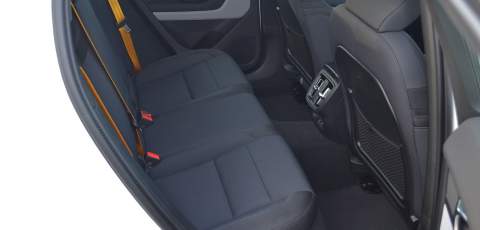
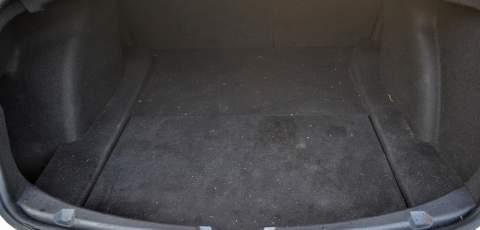
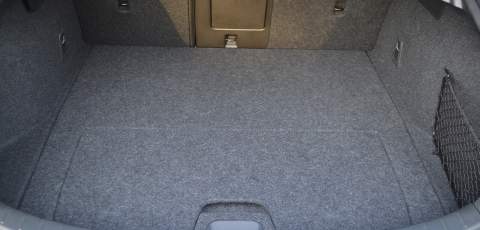
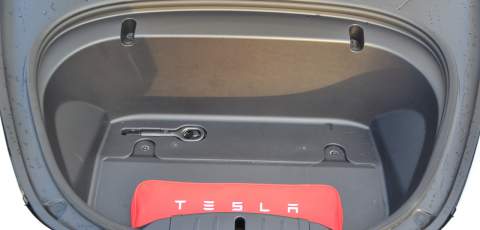
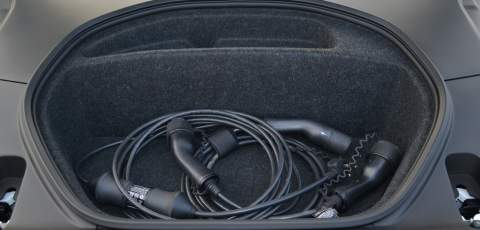
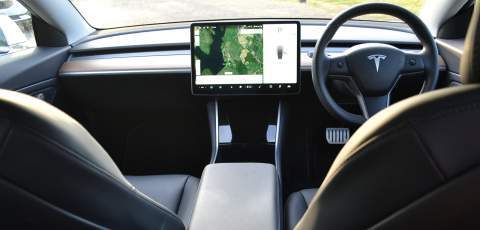
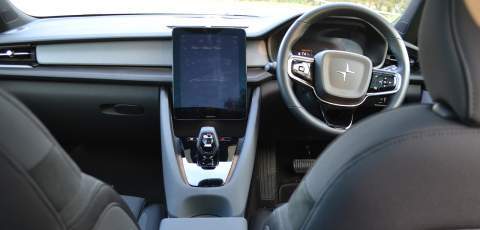
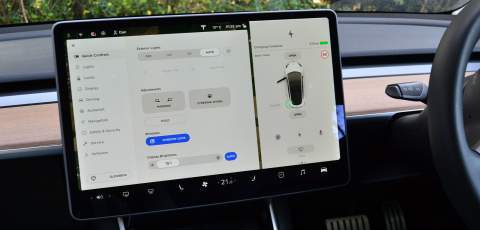
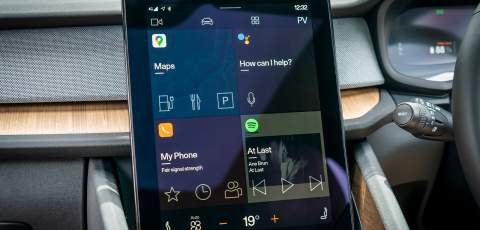
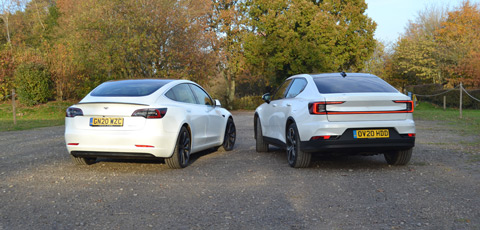
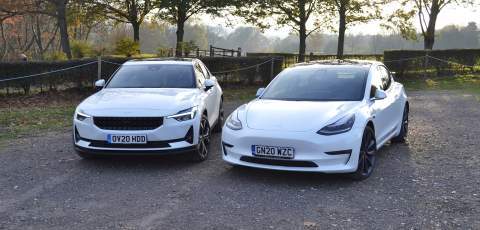

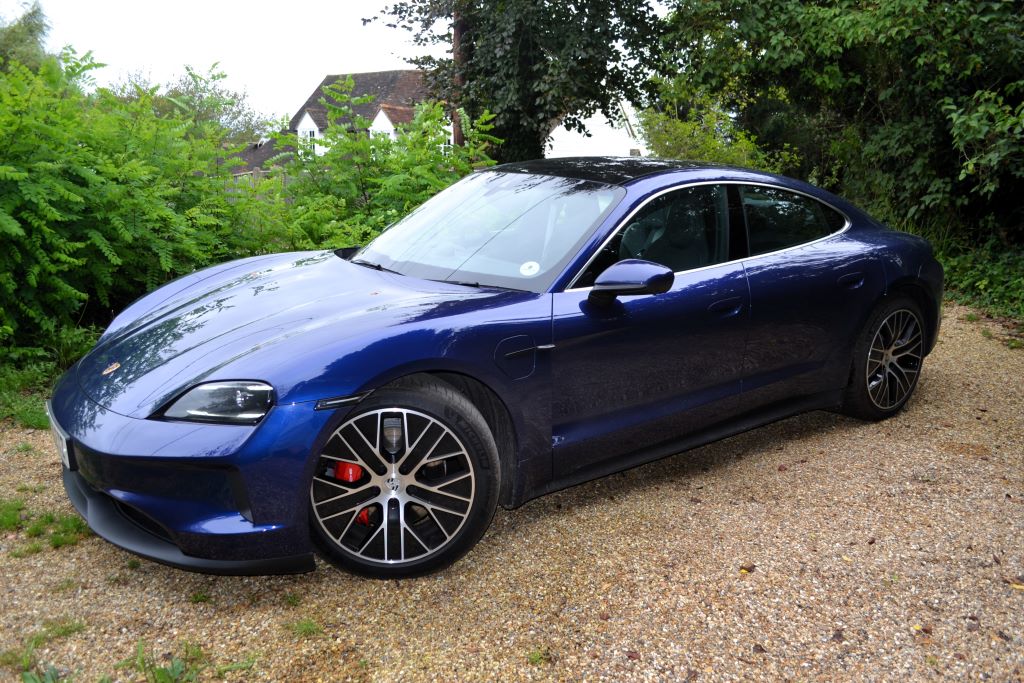
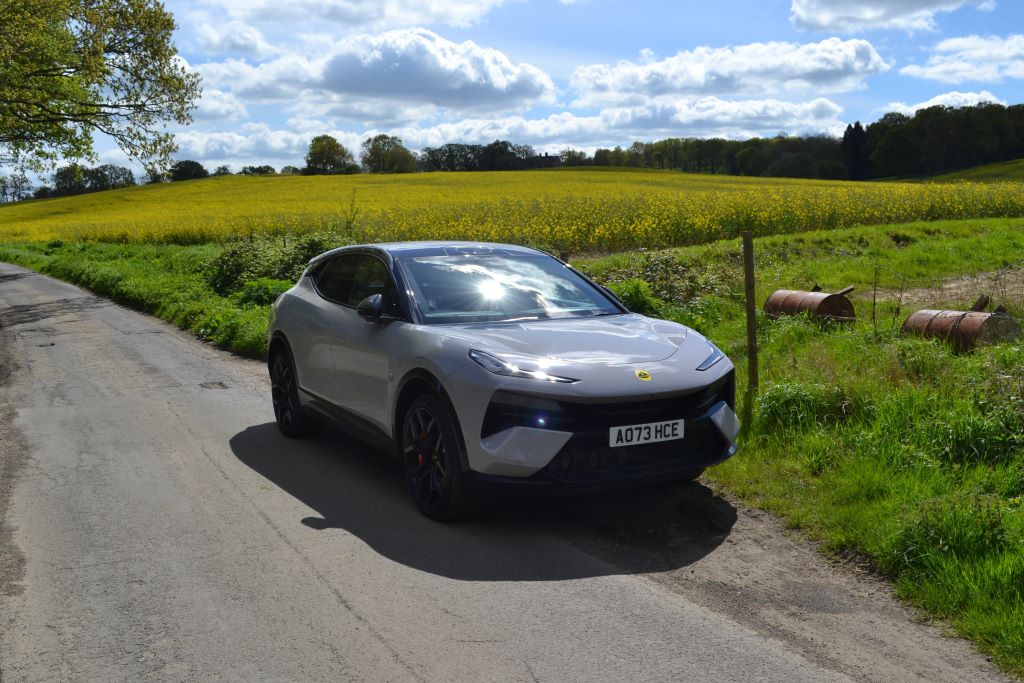

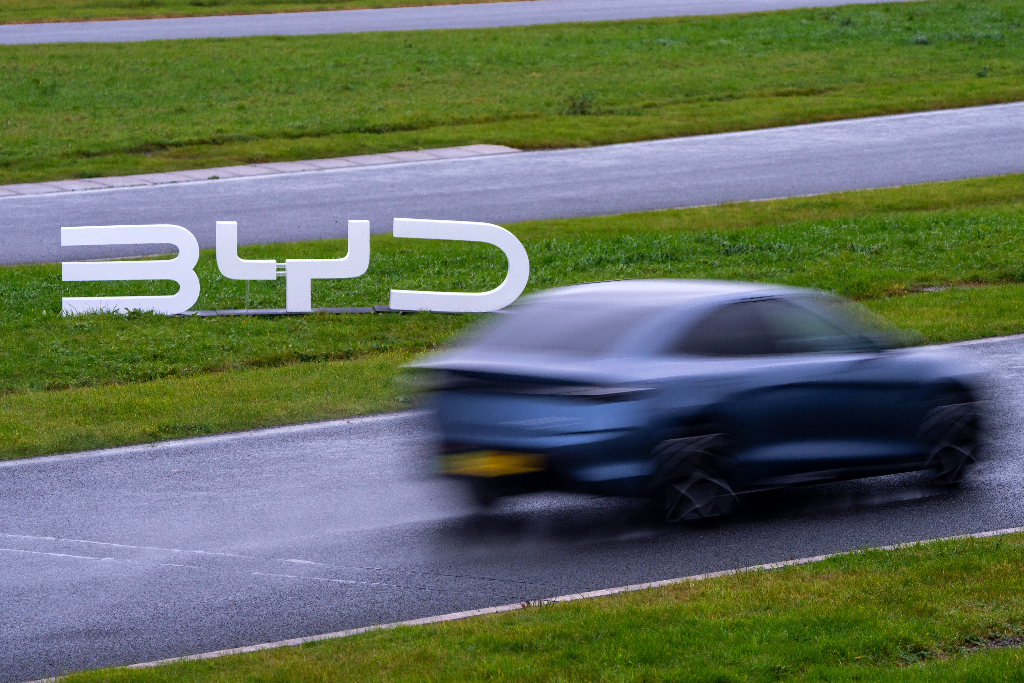
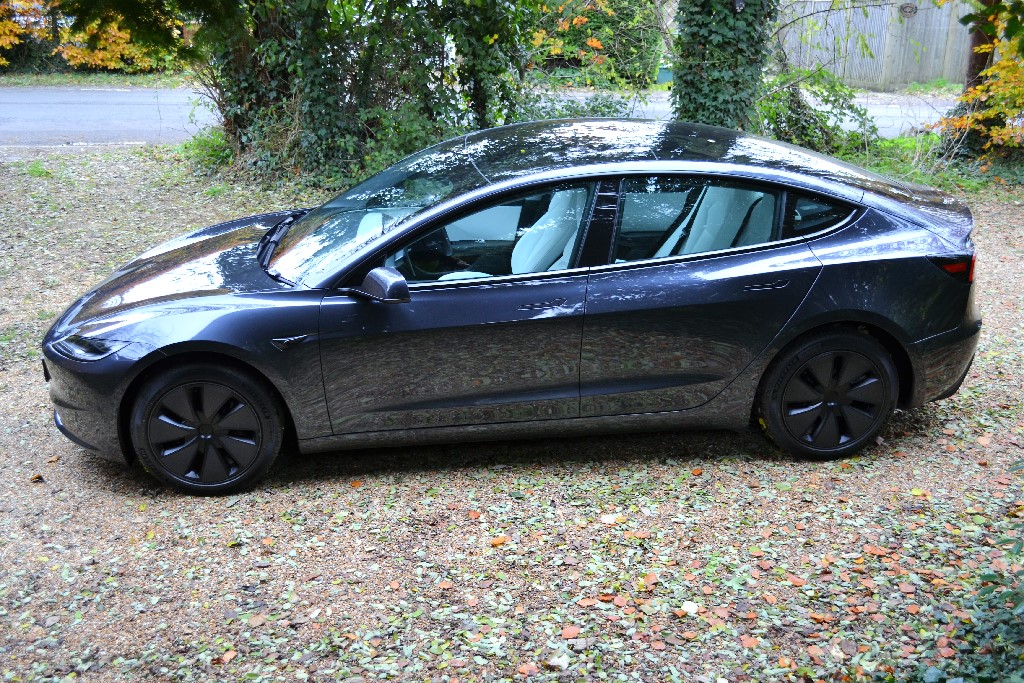
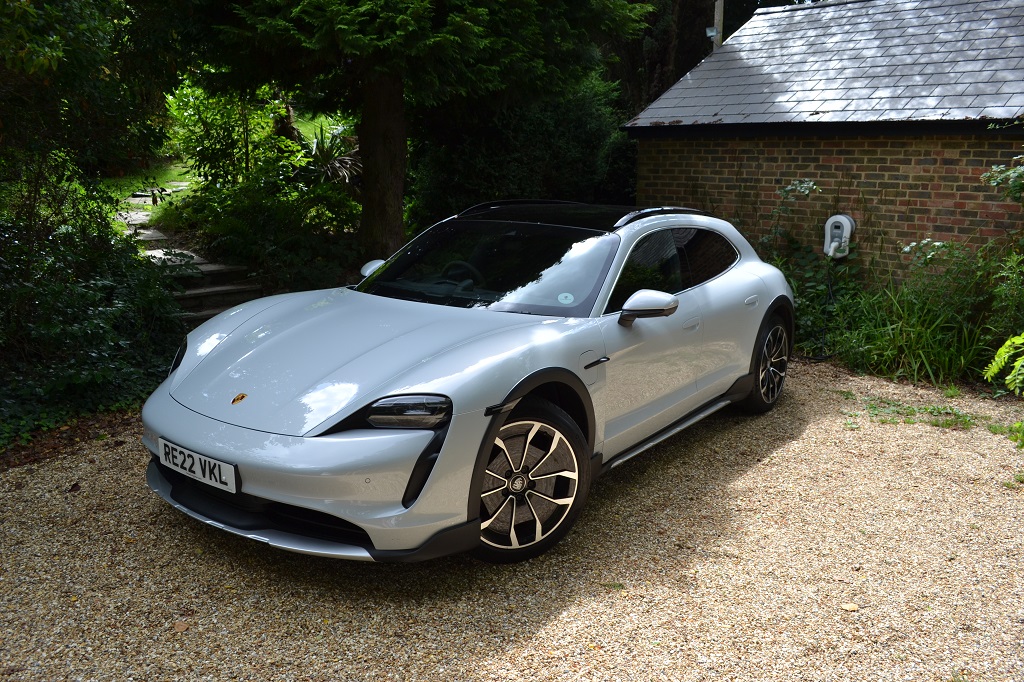

Comments (0)
Be the first to write a comment
Login/ Signup